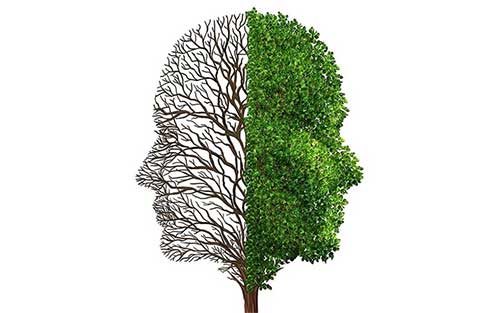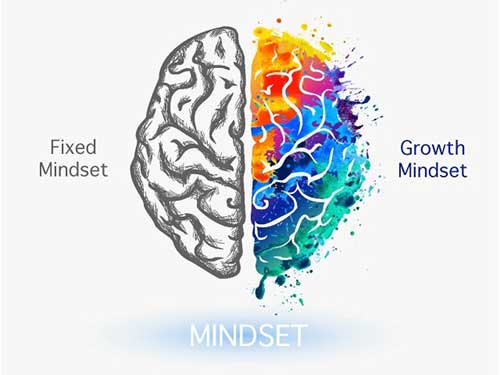The need for SEL has never been more pressing. Living in the digital age with less face-to-face contact has made it more difficult for adolescents to develop social and emotional skills. This makes opportunities in the classroom to grow socially and emotionally even more important.
As an educator, you may feel challenged or even overwhelmed when you first consider implementing social and emotional learning (SEL) opportunities at your school; but do not be discouraged. When you take on a growth mindset, it changes everything.
Fixed vs. growth mindsets
For starters, what is a fixed mindset? According to psychologist Dr. Carol Dweck from Stanford University, a fixed mindset is characterized by the belief that intelligence is fixed, static, and unchangeable. In contrast, a person with a growth mindset believes that intelligence can grow through learning and effort. Read on to learn how a growth mindset affects SEL.
Fostering a growth mindset
According to Dr. Dweck’s research, mindsets play an essential role in student motivation. She discovered that students who believed that intelligence can be developed over time outperformed students who had a fixed mindset. While these findings have great importance regarding academic achievement, how do they apply to the emotional growth of students?
For students to develop a growth mindset and an optimistic attitude, their teachers, administrators, and school counselors must first have a growth mindset. If educators and administrators are not open to growth, they aren’t modeling the positive attitudes necessary for students to develop a growth mindset.
Tips for teachers to cultivate a growth mindset:
- Practicing self-talk: “The lecture was not very engaging this time, but I can work on it to have a better outcome next time.”
- Practicing mindfulness to learn to be more in the moment: “I was distracted in today’s class, but commit to being fully present tomorrow.”
- Reflecting on one’s own strengths and weaknesses: “How can I use my natural ability to engage students to help me be successful at Parent-Teacher Night?”
- Focusing on progress, not perfection: “The class average grade increased by 5% since last year. It’s not at the level I want it to be yet, but we’re on the right track!”

Encouraging a growth mindset for high school students
It is no secret that high school can be very stressful, with the pressure of applying to colleges, juggling numerous academic subjects as well as after-school activities, and for some, working at a job. These factors, plus living through a global pandemic, all put students at high risk for stress.
High school students who feel stressed are more likely to feel anxious and experience low self-esteem and self-doubt. But engaging in SEL activities through the lens of a growth mindset can help students feel more motivated and confident, and less down on themselves when they hit bumps in the road.
Teachers can help students develop a growth mindset by giving them ample encouragement. While students will inevitably experience some difficulty in the classroom and stress surrounding peer relationships, through SEL activities, they can be taught that improvement and growth are always possible.
Teaching the competencies of SEL through a growth mindset
- Self-awareness and self-management —To address self-awareness through a growth mindset, teachers can encourage small group discussions that allow students to talk about their strengths and identify what they want to improve. The key to imparting a growth mindset when encouraging self-awareness is to highlight improvement.
- Self-management skills — Self-control and maturity can be developed through activities like teaching students coping skills such as relaxation strategies. Through a growth mindset approach, teachers can explain to students that it is okay to struggle and experience anxiety, and how self-management skills can help reduce the distress they experience.
- Social awareness – Social awareness can be improved through a growth mindset. One good way to foster this competency is through journaling exercises. For example, students can be encouraged to journal and reflect on a time when they misjudged someone and how they might evaluate the situation differently next time.
- Relationship skills – Relationship skills can be taught through a growth mindset by giving students authentic encouragement when they have worked well with others. Many educators teach their students how to develop relationship skills through practicing teamwork and collaborative problem-solving.
- Responsible decision-making – Help students recognize the consequences of their decisions, both good and bad. This can mean guiding them to the realization that it is always possible to learn from one’s mistakes and make better decisions next time.
Focusing on these core competencies through a growth mindset will improve high school students’ readiness for college and the workforce. The key to a growth mindset relies on encouragement and teaching students that it is okay to struggle and that it is possible to overcome difficulties. Not all students naturally have a growth mindset, but they can develop one: Teachers can model a growth mindset and provide SEL activities that encourage progress, not perfection.
Sources:
- https://casel.s3.us-east-2.amazonaws.com/SEL-in-High-School-ELA-8-20-17.pdf
- https://www.edutopia.org/discussion/developing-growth-mindset-teachers-and-staff
- https://www.edweek.org/leadership/opinion-carol-dweck-revisits-the-growth-mindset/2015/09
- https://portal.cornerstonesd.ca/group/yyd5jtk/Documents/Carol%20Dweck%20Growth%20Mindsets.pdf






